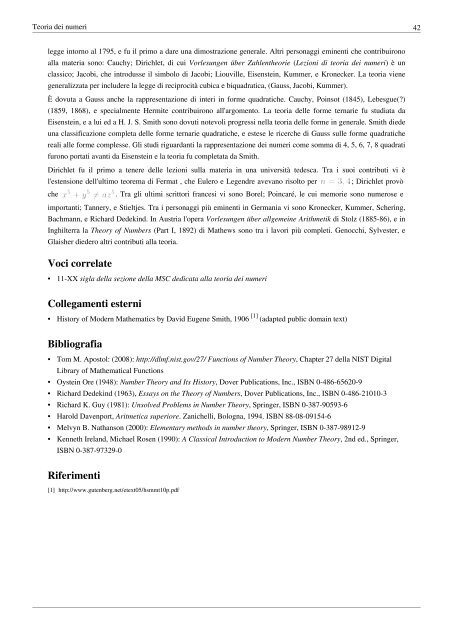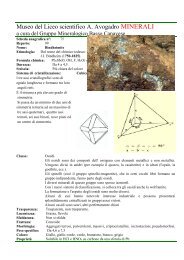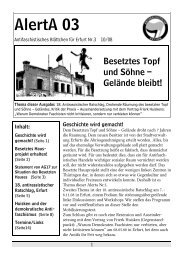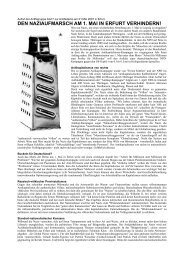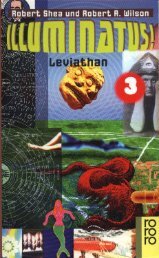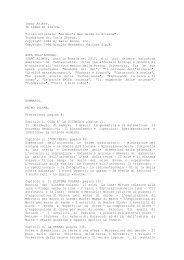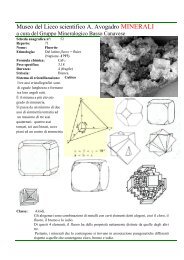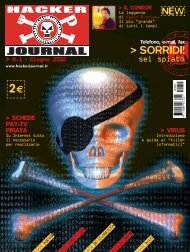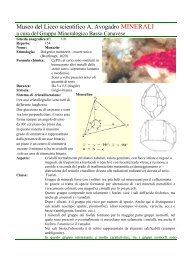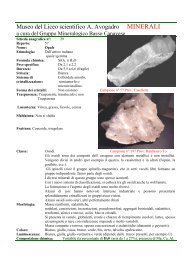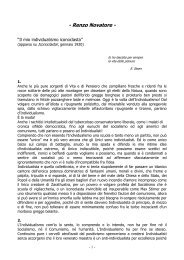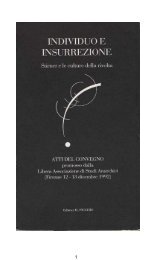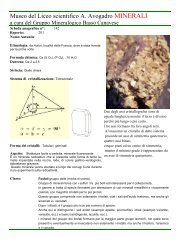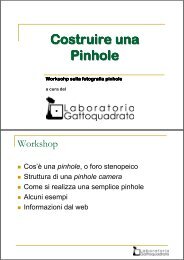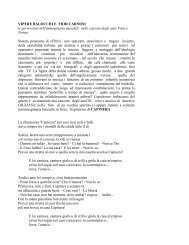Geometria - Autistici
Geometria - Autistici
Geometria - Autistici
You also want an ePaper? Increase the reach of your titles
YUMPU automatically turns print PDFs into web optimized ePapers that Google loves.
Teoria dei numeri 42<br />
legge intorno al 1795, e fu il primo a dare una dimostrazione generale. Altri personaggi eminenti che contribuirono<br />
alla materia sono: Cauchy; Dirichlet, di cui Vorlesungen über Zahlentheorie (Lezioni di teoria dei numeri) è un<br />
classico; Jacobi, che introdusse il simbolo di Jacobi; Liouville, Eisenstein, Kummer, e Kronecker. La teoria viene<br />
generalizzata per includere la legge di reciprocità cubica e biquadratica, (Gauss, Jacobi, Kummer).<br />
È dovuta a Gauss anche la rappresentazione di interi in forme quadratiche. Cauchy, Poinsot (1845), Lebesgue(?)<br />
(1859, 1868), e specialmente Hermite contribuirono all'argomento. La teoria delle forme ternarie fu studiata da<br />
Eisenstein, e a lui ed a H. J. S. Smith sono dovuti notevoli progressi nella teoria delle forme in generale. Smith diede<br />
una classificazione completa delle forme ternarie quadratiche, e estese le ricerche di Gauss sulle forme quadratiche<br />
reali alle forme complesse. Gli studi riguardanti la rappresentazione dei numeri come somma di 4, 5, 6, 7, 8 quadrati<br />
furono portati avanti da Eisenstein e la teoria fu completata da Smith.<br />
Dirichlet fu il primo a tenere delle lezioni sulla materia in una università tedesca. Tra i suoi contributi vi è<br />
l'estensione dell'ultimo teorema di Fermat , che Eulero e Legendre avevano risolto per ; Dirichlet provò<br />
che . Tra gli ultimi scrittori francesi vi sono Borel; Poincaré, le cui memorie sono numerose e<br />
importanti; Tannery, e Stieltjes. Tra i personaggi più eminenti in Germania vi sono Kronecker, Kummer, Schering,<br />
Bachmann, e Richard Dedekind. In Austria l'opera Vorlesungen über allgemeine Arithmetik di Stolz (1885-86), e in<br />
Inghilterra la Theory of Numbers (Part I, 1892) di Mathews sono tra i lavori più completi. Genocchi, Sylvester, e<br />
Glaisher diedero altri contributi alla teoria.<br />
Voci correlate<br />
• 11-XX sigla della sezione della MSC dedicata alla teoria dei numeri<br />
Collegamenti esterni<br />
• History of Modern Mathematics by David Eugene Smith, 1906 [1] (adapted public domain text)<br />
Bibliografia<br />
• Tom M. Apostol: (2008): http://dlmf.nist.gov/27/ Functions of Number Theory, Chapter 27 della NIST Digital<br />
Library of Mathematical Functions<br />
• Oystein Ore (1948): Number Theory and Its History, Dover Publications, Inc., ISBN 0-486-65620-9<br />
• Richard Dedekind (1963), Essays on the Theory of Numbers, Dover Publications, Inc., ISBN 0-486-21010-3<br />
• Richard K. Guy (1981): Unsolved Problems in Number Theory, Springer, ISBN 0-387-90593-6<br />
• Harold Davenport, Aritmetica superiore. Zanichelli, Bologna, 1994. ISBN 88-08-09154-6<br />
• Melvyn B. Nathanson (2000): Elementary methods in number theory, Springer, ISBN 0-387-98912-9<br />
• Kenneth Ireland, Michael Rosen (1990): A Classical Introduction to Modern Number Theory, 2nd ed., Springer,<br />
ISBN 0-387-97329-0<br />
Riferimenti<br />
[1] http:/ / www. gutenberg. net/ etext05/ hsmmt10p. pdf


